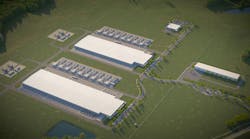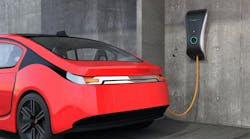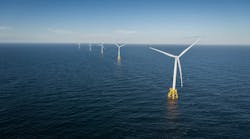Opportunities for continuing the transformation of energy saving technologies in commercial and industrial lighting extend well into the future and the time is right to capture those savings according to a report published in July by the DesignLights Consortium (DLC), Medford, MA, keeper of a list of qualified lighting equipment used by utility rebate programs and specifiers throughout the industry.
In the report, titled “Energy Savings Potential of DLC Commercial Lighting and Networked Lighting Controls,” authored by Dan Mellinger, senior consultant at Energy Futures Group, Hinesburg, VT, Mellinger said the findings illustrate that “we have a massive opportunity in front of us in terms of energy savings, carbon, and climate…an opportunity we can’t ignore.”
DLC Executive Director Christina Halfpenny said in a release that DLC considers the study “a bellwether for how and where we are allocating our resources so we can make the biggest impact on market adoption and energy efficiency.”
The study debunked speculation that C&I lighting efficiency programs will fall off a cliff when Energy Independence and Security Act (EISA) standards take effect in 2020. Those standards address screw-base fixtures, a type of lighting used by only 10% of C&I facilities. Over 70% of the nation’s C&I lighting inventory, on the other hand, comprises indoor linear fixtures – a category that currently enjoys just 6.5% market adoption of hyper-efficient LEDs and is a great candidate for controls, further enhancing the savings opportunities, DLC said in the release.
Mellinger said rapid adoption of LEDs in the indoor C&I lighting space can maintain energy savings potential for C&I lighting portfolios through at least 2024. However, that only begins to scratch the surface. The real energy savings story emerges by looking at networked lighting controls (NLCs) – systems in which lighting fixtures, sensors, switches, and other devices are tied together through control wiring or wirelessly to enable “smart” systems that adjust for changing conditions, space usage, and more.
Here's the study (PDF): Energy Savings Potential of DLC Commercial Lighting and Networked Lighting Controls









